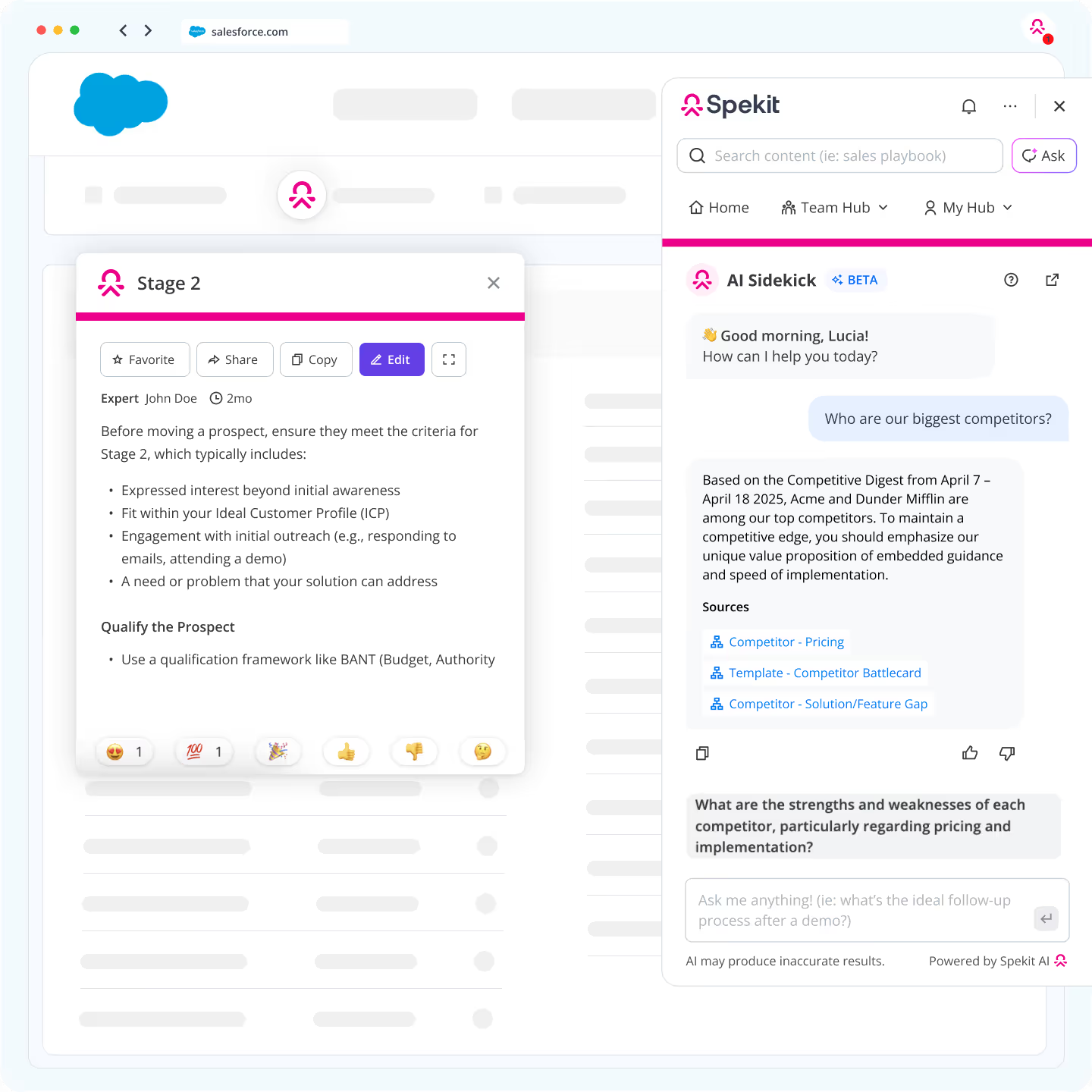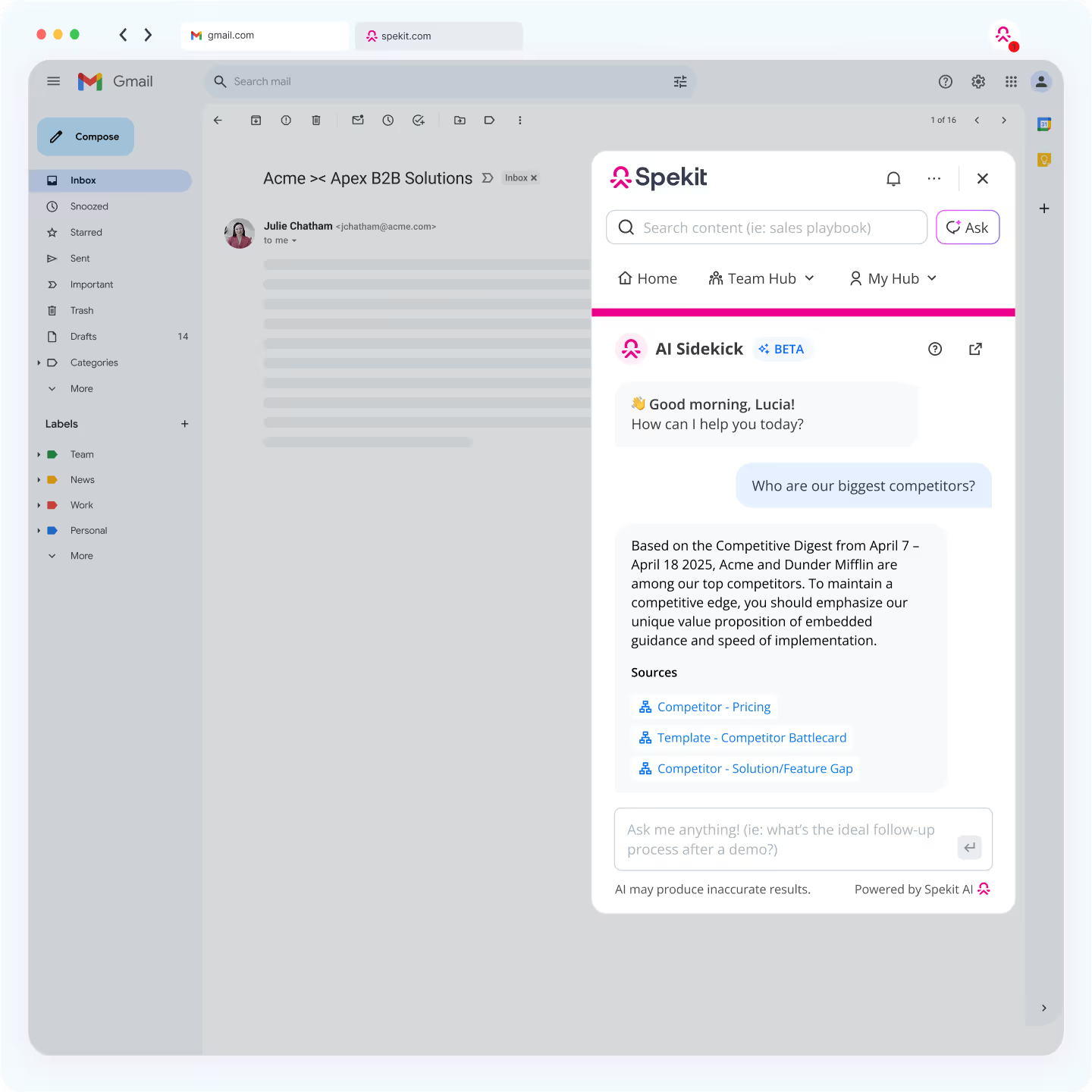
Sales playbooks should live where sales plays happen



Deliver sales playbooks where questions arise
Break down playbook content into bite-sized answers to seamlessly guide reps through processes and workflows.

Easily adjust playbooks as strategy evolves
Publish and notify your reps of playbook changes in minutes, not months.

Know exactly how playbooks are impacting performance
Quickly assess the effectiveness of playbooks, who is using them, and where you can improve.

Reinforce MEDDIC and your sales methodologies in-app to accelerate pipeline velocity
Prospecting happens in real-time; your playbooks and processes should too. Reveal competitive battle cards, objection handling tips, decision criteria, and more in the moment of need.

Strategically plan and build accounts with one-click sales plays
No more scrolling through 100-page Google docs. Spekit sales playbook software delivers real-time sales plays for high-value accounts, target industries, personas, and more.
Hear from our customers
Faster sales cycles, dramatically decreased ramp times, promotions, and more. Meet the teams embracing the future of enablement.
"In today's hyper-competitive market, Spekit has been instrumental in enabling us to adapt quickly and empower our reps in their moment of need to seize critical revenue opportunities. Case in point: an eight figure pipeline boost from a recent change initiative we led with Spekit."


"Spekit makes it easy for my salespeople to have the information they need, when they need it, and right where they are. It's helped us do more with less and work smarter instead of harder."


"Spekit being right there, right when we need it, is a game changer. The AI provides my team with the exact content or answers they need to answer emails quickly and just makes it so much easier for them to feel confident in their responses."





Help reps push deals through the funnel with real-time coaching and support
Top-performing sales reps are 2x more likely to report they can always find answers to questions independently. Help all of your reps become your best rep.

Drive retention and expansion with customer playbooks embedded within Clari, Gainsight, or any web-app
Enablement doesn’t stop once a deal is closed. Give your Customer Success team the knowledge to turn new customers into lifelong champions.
AI-powered enablement that works where your reps work
Instantly empower your reps with everything they need to succeed, at their fingertips, the moment they need it.

